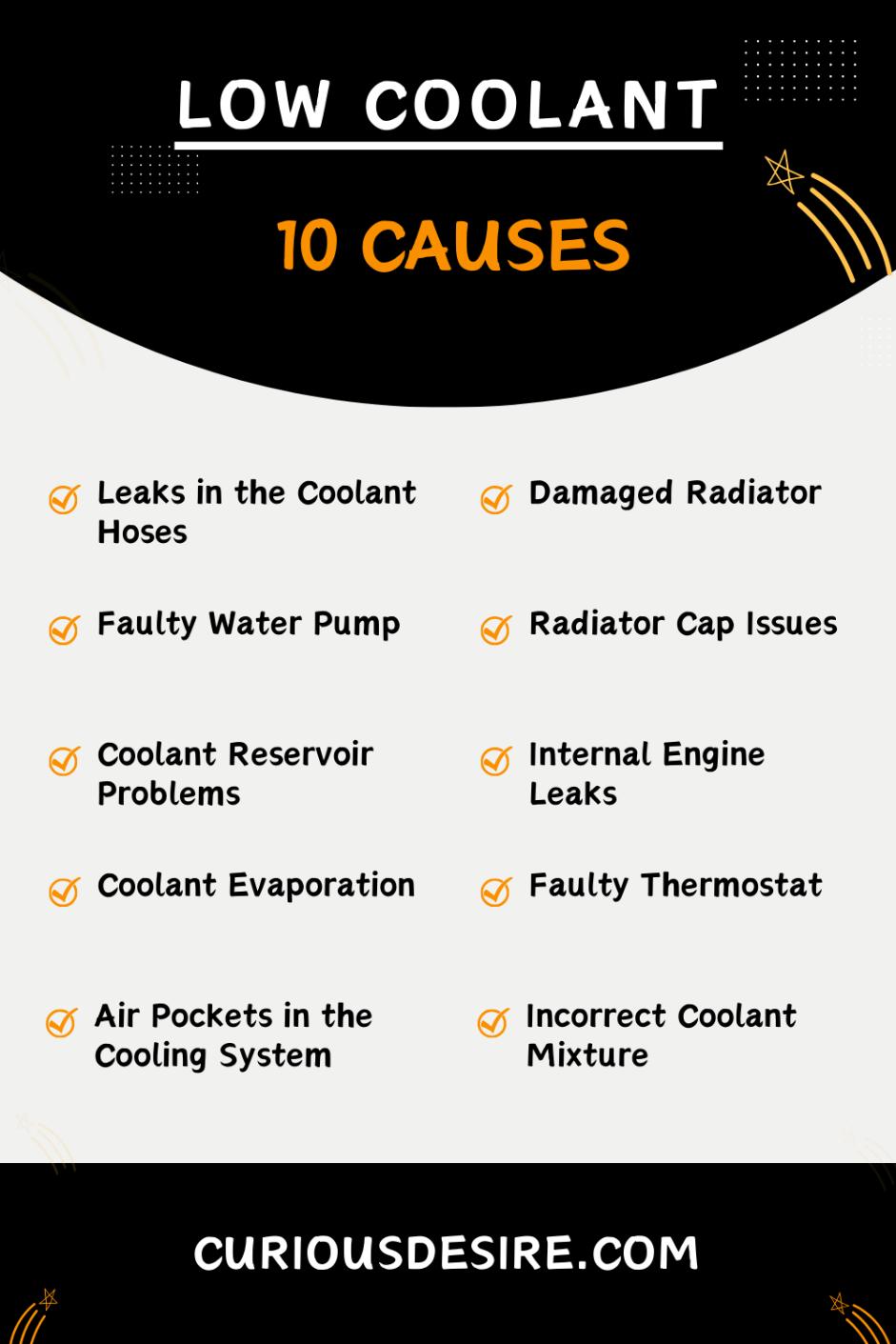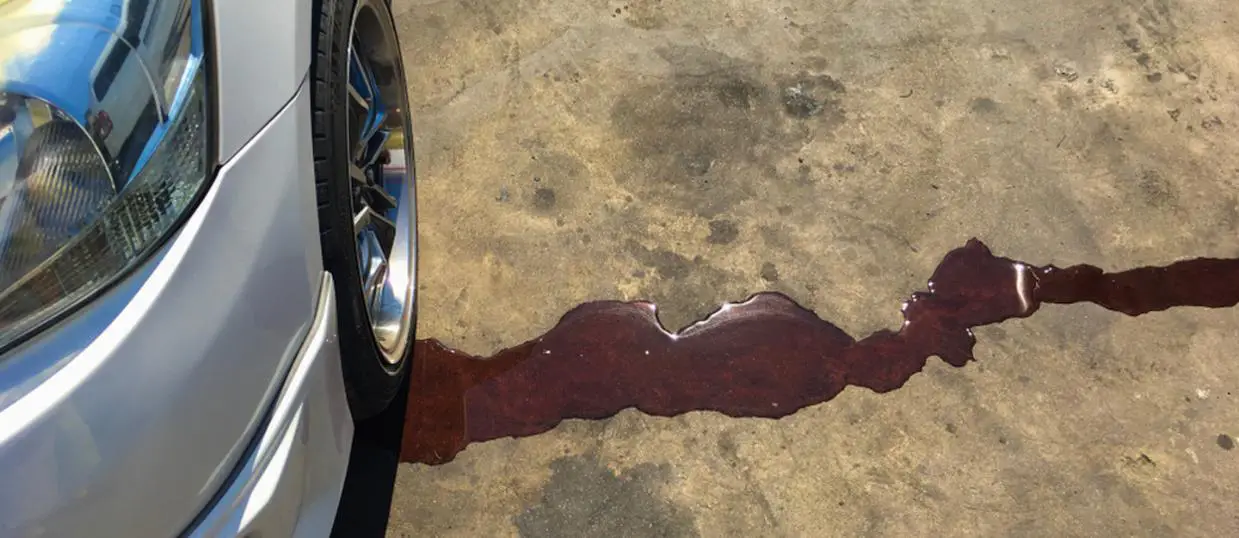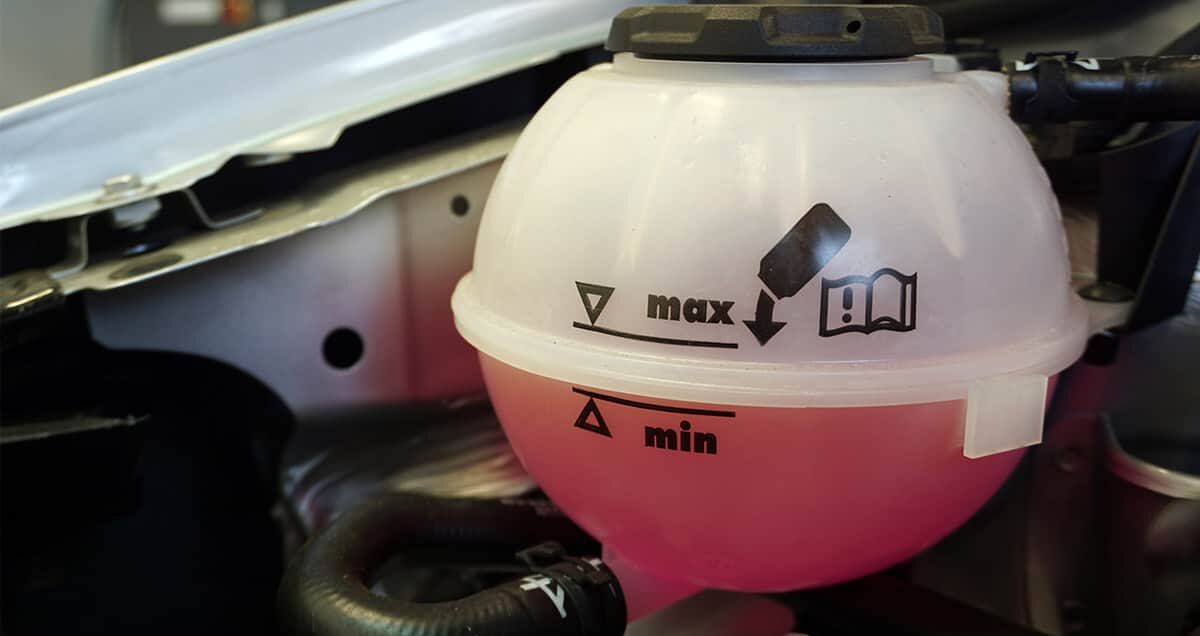Maintaining the right coolant level is crucial for a vehicle’s cooling system to function optimally.
Low coolant levels, if not addressed, can result from various factors.
In this discussion, we’ll explore the causes of low coolant, from external issues like leaks to internal engine concerns, highlighting the importance of identifying and resolving these issues for the overall health of the vehicle.
Here are the top 5 causes of low coolant:
- Radiator Cap Issues
- Cracks or Leaks in the Coolant Hoses
- Coolant Evaporation
- Air Pockets in the Cooling System
- Internal Engine Leaks
[toc]

1. Why is my coolant low but no leaks?
If your coolant is low but there are no visible leaks, there are several potential reasons.
It could be due to internal engine issues such as a blown head gasket or a cracked engine block, which allows coolant to mix with the oil or enter the combustion chamber.
Another possibility is coolant evaporation over time, especially if the cooling system is not properly sealed.
It’s essential to have the vehicle inspected by a mechanic to identify the root cause and address any internal leaks or other issues.
2. Why would a car be low on coolant?
A car can be low on coolant due to various reasons, including external or internal leaks, evaporation over time, or improper coolant maintenance.
External leaks from components like hoses, the radiator, or the water pump can lead to a gradual loss of coolant.
Internal engine issues, such as a blown head gasket or a cracked engine block, can also cause coolant to be consumed or lost.
3. What are the symptoms of low coolant?
Symptoms of low coolant include engine overheating, increased temperature gauge readings, the presence of coolant puddles beneath the vehicle, a sweet smell from the engine compartment, and a low coolant warning light on the dashboard.
If you notice any of these signs, it’s crucial to check the coolant level and address the issue promptly to prevent potential engine damage.
4. Is it normal for the coolant level to drop?
While a slight drop in coolant level over an extended period may be normal due to evaporation, a significant and sudden decrease is not typical.
If you notice a substantial drop in coolant level, it could indicate a leak, internal engine issues, or other problems that require investigation and prompt action.
5. Can I use water instead of coolant?
Water can be used temporarily in an emergency, but it’s not recommended for long-term use.
Coolant (a mixture of water and antifreeze) provides additional benefits such as corrosion protection, antifreeze properties, and a higher boiling point.
Using water alone may lead to rust, corrosion, and freezing in cold temperatures, potentially causing damage to the cooling system.
6. Can I add water to the coolant?
Yes, you can add water to the coolant to maintain the proper coolant-to-water ratio. It’s important to use distilled water to prevent mineral deposits in the cooling system.
Check your vehicle’s manual for the recommended coolant mixture and only use water to top up the system when needed.
7. How often does coolant need to be added?
Under normal circumstances, coolant should not need frequent additions. If you find yourself regularly topping up the coolant, it may indicate a potential issue such as a leak.
Periodic checks of the coolant level and addressing any underlying problems will help maintain the proper coolant level in the system.
8. How often should I top up coolant?
Topping up coolant should be done as part of routine maintenance. Regularly check the coolant level when the engine is cool, and top up as needed.
If you need to top up the coolant frequently, it’s crucial to investigate and address the root cause, such as a leak or internal engine issue.
9. How long should car coolant last?
The lifespan of car coolant varies depending on the type of coolant used.
Conventional coolant typically lasts for about two to three years, while long-life or extended-life coolants can last up to five years or more.
Refer to your vehicle’s manual and the coolant manufacturer’s recommendations for specific guidelines on coolant replacement intervals.
10. How long can coolant be below?
The coolant level should always be maintained above the minimum level indicated on the coolant reservoir.
Allowing the coolant level to fall below the minimum level can lead to inadequate cooling, potential engine overheating, and damage.
Regularly check the coolant level and top up as needed to ensure proper cooling system function.

